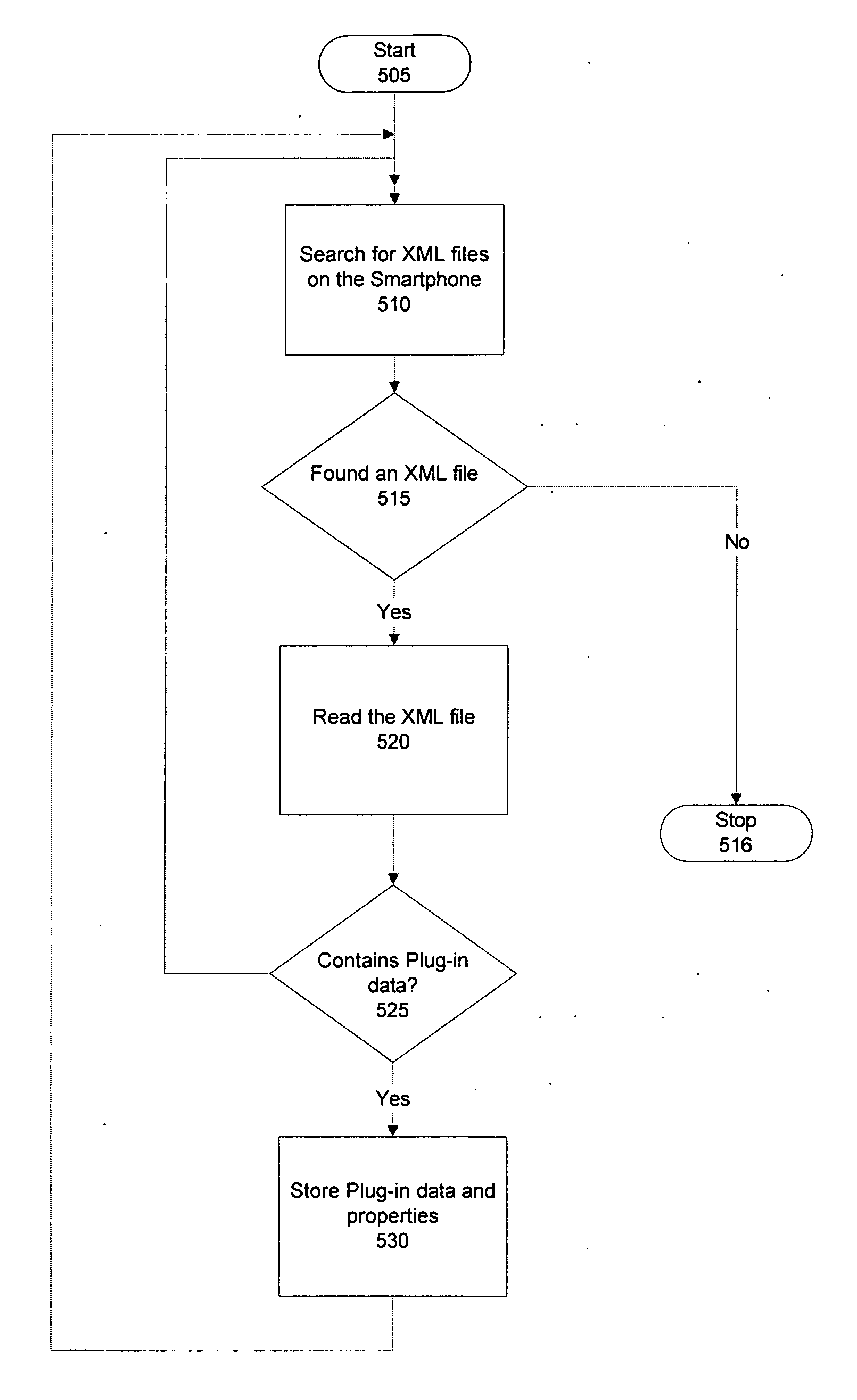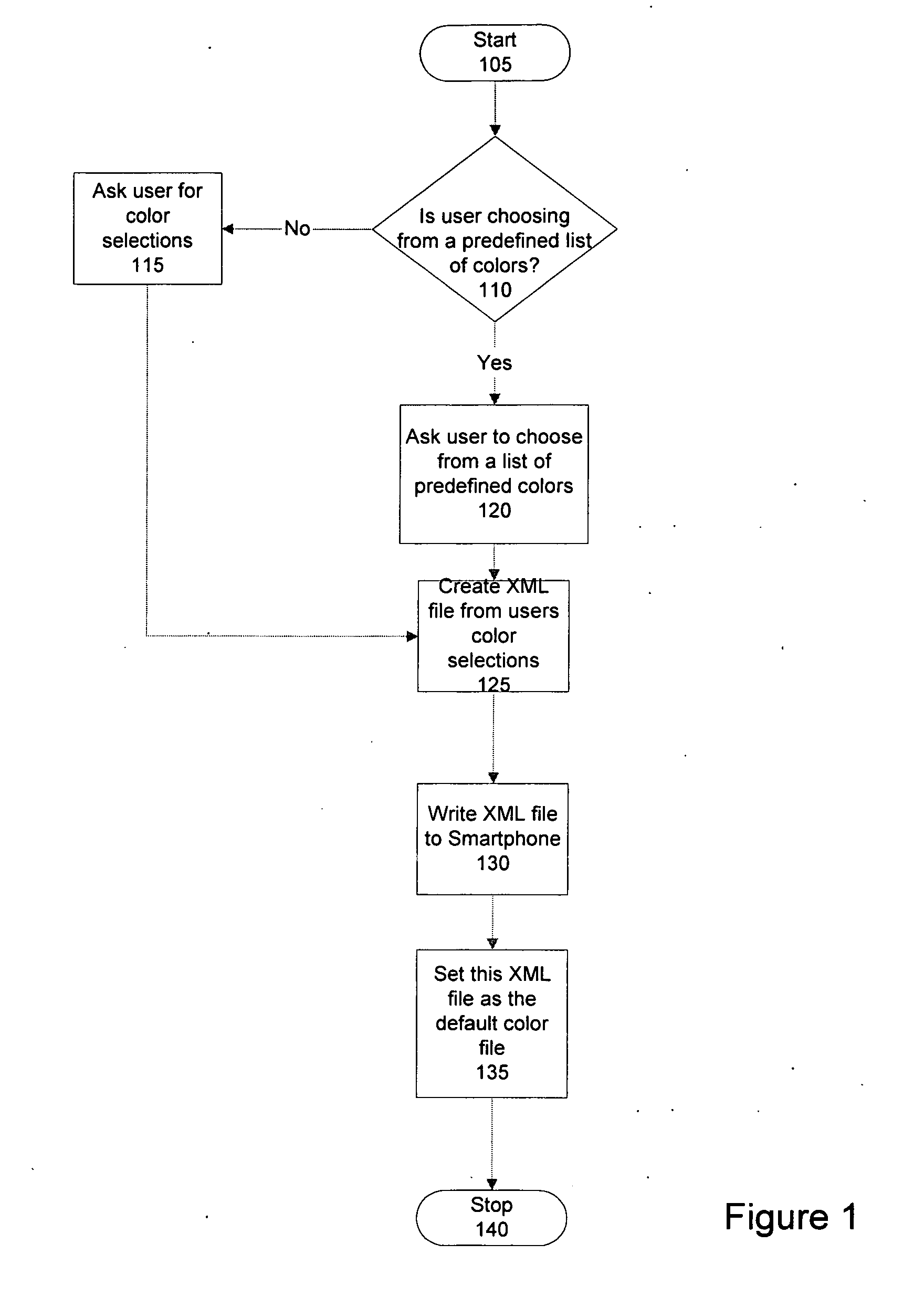Method and system for a home screen editor in smartphone devices
- Summary
- Abstract
- Description
- Claims
- Application Information
AI Technical Summary
Problems solved by technology
Method used
Image
Examples
first embodiment
[0094] The first embodiment generally does not allow these custom items to be edited. When the user has edited their Home Screen and the present embodiment writes the new XML file, this custom tag is saved as it was found (i.e. unaltered and in-place) to make sure full compatibility was retained on this unknown tag.
second embodiment
[0095] A second embodiment to work out attribute values for Plug-ins will now be described in some detail. FIG. 15 illustrates an exemplary flow chart of the second method for working out attribute values for Plug-ins, in accordance with an embodiment of the present invention. The method begins with the user initiating a process start at Step 1505 most likely through manual selection. The system then prompts a decision at Step 1510 to determine if a Plug-in reference has been found. In no Plug-in reference if found, the process is terminated at Step 1511, and if a Plug-in reference is found, Plug-in reference CLSID, x and y properties are gathered at Step 1515. A reading of other Plug-in properties at Step 1520 further gathers any additional tags that each found reference may feature while a decision point at Step 1525 looks for an unknown tag in the pre-loaded database. The system proceeds to store a tag as-is at 1530 when an unknown tag is not located in pre-loaded database 1520. ...
third embodiment
[0098] A third embodiment to work out attribute values for Plug-ins will now be described in some detail. FIG. 17 illustrates an exemplary flow chart of the third method to work out attribute values for Plug-ins, in accordance with an embodiment of the present invention. The method begins with the user initiating a process start at Step 1705 most likely through manual selection. The system then prompts a decision at Step 1710 to determine if a Plug-in reference has been found. In no Plug-in reference if found, the process is terminated at Step 1711, and if a Plug-in reference is found, Plug-in reference CLSID, x and y properties are gathered at Step 1715. A reading of other Plug-in properties at Step 1720 further gathers any additional tags that each found reference may feature where the results are stored to a temporary database at 1725 creating a list of possible tag selections at 1730. This process repeats until no additional Plug-In references 1710 are located thus terminating p...
PUM
 Login to View More
Login to View More Abstract
Description
Claims
Application Information
 Login to View More
Login to View More - R&D
- Intellectual Property
- Life Sciences
- Materials
- Tech Scout
- Unparalleled Data Quality
- Higher Quality Content
- 60% Fewer Hallucinations
Browse by: Latest US Patents, China's latest patents, Technical Efficacy Thesaurus, Application Domain, Technology Topic, Popular Technical Reports.
© 2025 PatSnap. All rights reserved.Legal|Privacy policy|Modern Slavery Act Transparency Statement|Sitemap|About US| Contact US: help@patsnap.com



